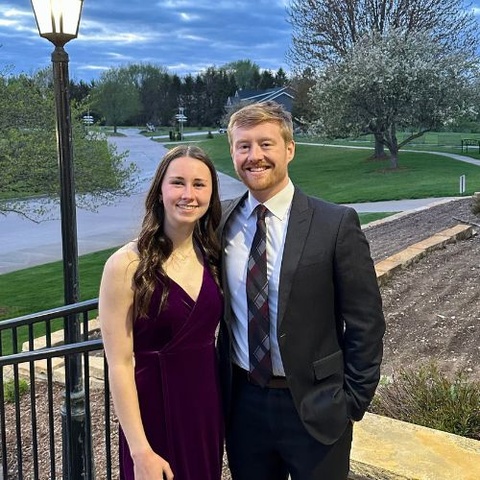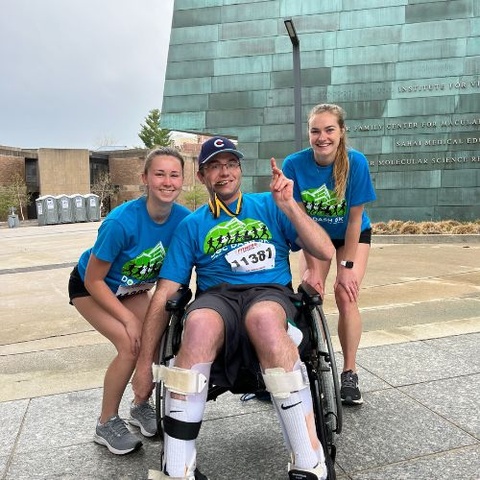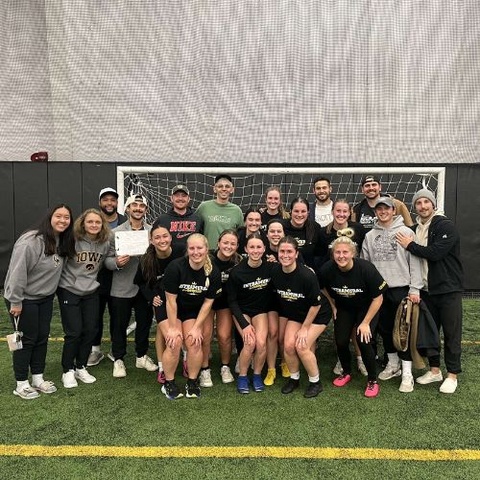“It's so cool how big of an impact physical activity can have on people's lives. It's such a huge difference-maker for people in helping them to get back to doing the things that they want to be doing and decrease their pain levels.”
- Maya Deuso

Hometown: Cedar Rapids, Iowa
Education: University of Northern Iowa, B.A. Movement and Exercise Science
What was your path to physical therapy as a career?
I always knew I wanted to go into health care, but I wasn't quite sure what field I wanted to do. I don’t like needles, so I knew that was going to limit me from being a nurse, doctor, or PA [physician assistant]. My older sister is a PA; she was the one who suggested PT to me. I went and shadowed a PT, and I immediately fell in love with it.
It's so cool how big of an impact physical activity can have on people's lives. It's such a huge difference-maker for people in helping them to get back to doing the things that they want to be doing and decrease their pain levels.
I love how much time we get to spend with patients. Doctors are typically in and out in maybe 15 minutes, but we get to spend 40 or 45-minute sessions with patients, often two to three times a week for several weeks. We get to see them over and over, build a professional relationship with them, and see their progress throughout that time span. That’s what attracted me to PT.

What people and experiences have shaped your time here?
The program keeps a list of community members in the area that students can volunteer to help. I worked with a 28-year-old male named Josh who has Friedreich's ataxia. I came in once or twice a week and helped him with making meals, getting ready for bed, and other household care items like that. This gave me more experience with patient care and patient transfers while I was helping him out.
I also learned a lot about accessibility throughout the community through that experience. He is a wheelchair user, so there were times when I took him out into the community to do different activities, like going to basketball games or getting ice cream, and it was interesting to experience that through the lens of having to navigate a wheelchair through those areas. That was a huge, huge learning opportunity.
Even if you're in a wheelchair, exercise can still make a difference in your life. He went to the gym every day of the week, and he participated in a lot of different adaptive activities, like Doc Dash. He just got so much joy out of going to the gym, training for those things, and finding ways to adapt the exercises. It was super cool to see that.
Honorable mentions include all of my classmates and the entire program faculty and staff for making PT school so much fun. They were always there to support and guide me, as well as helping me to enjoy some time away from studying.
Our PT program has an emphasis on getting students involved in research. What was your research project?
I worked with Jason Wilken [PT, PhD] and Dave Williams [PhD, MPT, ATC, CSCS]. We researched these special shoes called “jump soles.” It's a shoe that ends halfway back on the foot, right at the arch, and then your heel is unsupported. As you're standing in it, you have to hold your heel up by using your calf muscles and Achilles tendon.
These shoes are designed for you to do simple rehabilitation activities like heel raises, walking, or maybe some small hops. But people started using them while playing basketball and sprinting, and then people started getting injured. They became a bit discredited as dangerous, so there aren’t a ton of research studies that have been done on them. We wanted to know what rehabilitation exercises are best to do in these shoes and if they are effective.
We studied those simple exercises with the shoes on and with the shoes off, comparing how much force is going through the Achilles tendon to see how the shoes could help people get better if they were to use them properly. We got to use the gait mechanics lab, which has cameras set up all around the room to create a 3D picture. It was really cool.

What are your fond memories of PT school?
My classmates played a lot of intramural sports together. All of us decided that we were going to take a break once a week from studying and just have some fun and get to know each other even better. I participated in a little bit of intramural flag football, and we actually won one of the intramural women's soccer championships!
Every year, the second-year PT students get to attend the American Physical Therapy Association’s national conference. We got to spend a few days in Boston this past spring learning about new treatment strategies and evidence in the profession and exploring the city. That was another favorite memory of mine from PT school.
What advice would you give to an incoming PT student?
My best advice would be to work hard and do all the things that you need to do, but take some time for yourself, too. It's so important. Find some time throughout the week to go to a sporting event, play some intramurals, go out and have dinner with your friends, or whatever it may be, as you’re going through school.
What’s next for you?
I have a huge interest in working with the neuro population, so I am hoping to do that in the Des Moines area. I'm looking for jobs right now as I’m finishing out my studying for boards at the end of January.
I think what motivates me is how many different things you can do with the PT profession and how many different specialties we are in. We can help with lymphedema. There are pelvic health physical therapists. You can specialize in neurology. You can go into oncology and work with cancer patients. There are even physical therapists in the NICU and ER. It's just so cool how many different things that we can help with and how many different settings we can practice in.